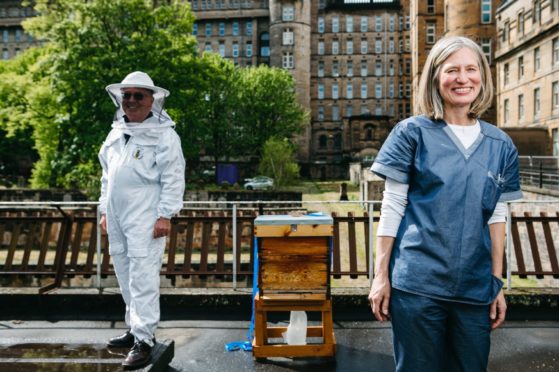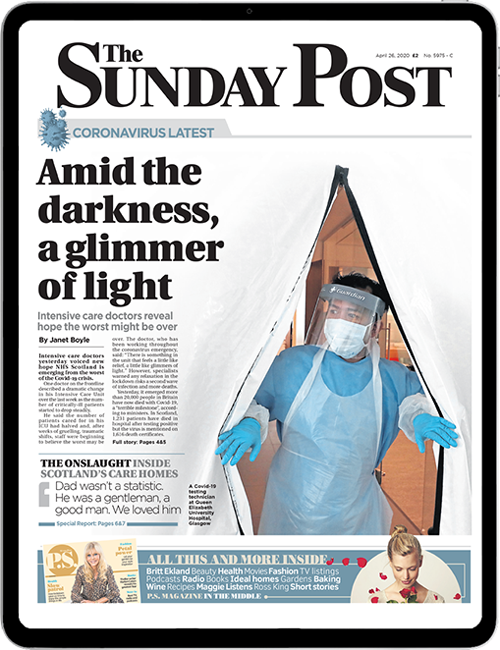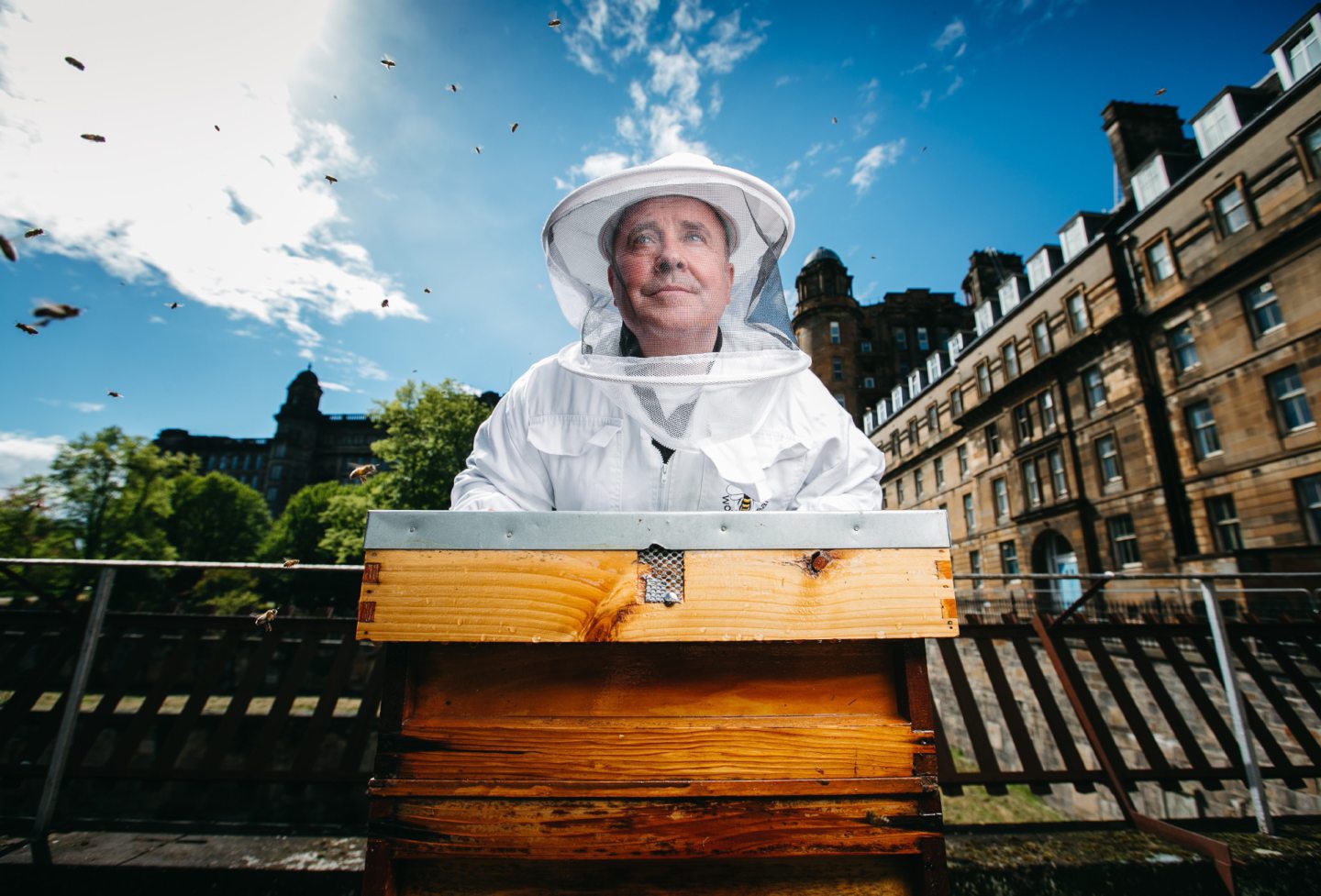
Staff at one of Scotland’s busiest hospitals have been swapping PPE for anothr kind of protective suit as they cultivate a colony of bees.
Their hive, at the rear of Glasgow Royal Infirmary, is a few hundred yards from wards which have been at the centre of the fight against the Covid-19 virus.
After a year of using large amounts of plastic protective equipment, healthcare workers decided to repay nature by setting up the colony. The hive, which is soon to be joined by another, was established in March by members of Friends Of Glasgow Royal Infirmary, a society which celebrates the history and heritage of the 227-year-old medical and nursing centre.
Consultant rheumatologist Dr Hilary Wilson, said: “It’s a way for us to help pay back for all the plastic PPE and other vital equipment used to keep us safe in the pandemic.
“What’s more, it is a boost for the staff and patients to know that there are bees thriving in hives not far from the wards.
“We also want to get the hospital engaged in nature by helping to preserve these insects. The bees have been in decline and it is vital to nurture them because the world would not function without them pollinating plants.”
Unlike their cousins the bumblebee, whose numbers have fallen by around a third over the last decade, honey bees are not threatened by population decline but are under stress, like many pollinators. Their populations are currently threatened from parasitic mites, insecticides and a host of other factors say researchers, including pesticides and weedkillers which destroy their vital pollen supply.
Our wetter and milder winters are leading to higher winter bee losses.
The Royal’s colony and wooden framed home were supplied by Glasgow and District Beekeepers Association. The hive came from a firm in Fife.
Dr Wilson said: “The idea of keeping bees behind the hospital was one I had for a while and was welcomed by fellow Friends of Glasgow Royal Infirmary.
“Glasgow & District Beekeepers Association guided us to establishing the first hive and while the beekeepers will oversee the hive, we are more than happy to pitch in when needed.
“They advised on what hives to get and now, six weeks later, we have a thriving colony.
“It’s looking hopeful for a good honey crop as the year progresses.
“A beekeeper’s suit is a bit different from our usual scrubs, but our former chief nurse and founding member John Stuart, looks pretty confident in the netted hat and sting-proof ensemble.
“It’s a joy to know there is a thriving bee colony so close to busy wards and theatres.
“When I mention to colleagues we have hives round the back of the hospital, their faces light up.”
John Stuart, 57, who recently retired as head of nursing at Glasgow Royal sings the praises of a hospital which has a history of breakthroughs.
It serves one of the most deprived populations in Western Europe in the east end of Glasgow and north of the city.
“Our Royal is certainly in the top 100 in the world for research and patient experience and hopefully our bees have have added to this.
“If things need to be done I will step up and that will include donning a beekeeper’s suit to look after the bees.
“Hilary has also planted a small garden at the entrance to Glasgow Royal, and at the bottom of Alexandra Parade, outside our New Lister research building.”
Glasgow Royal surgeon Professor Joseph Lister pioneered the use of antiseptic in surgery and was a pioneer of preventive medicine, saving lives forgenerations since.
The Glasgow Royal beehive nestles in a secluded part of the hospital just a few hundred yards from the busy M8 motorway where thousands of cars whiz past daily but the bees fly in the other direction to meander among the pollen trees and wildflowers scattered throughout the city’s Necropolis, which is not far away.
Mike Duncan of Glasgow and District Beekeepers Association said: “They have settled in very well and are busy gathering pollen from nearby cherry trees, hospital plants, hanging baskets in the streets and wildflowers in the Necropolis.
“Some may even forage at Glasgow Green just over a mile away because they can fly up to three miles, but they prefer to stay closer to the hive.
“It has been a cold start to the year but the bees are thriving and a decent crop of honey is not too far off.
“One hive has been established and another is being prepared.”
The hives were bought from UK bee company Thornes’ branch in Fife.
Gill Smith, director of the 118-year-old Lincoln company, said: “Some of the hives are made from British cedar grown on the Scottish English border.
“The natural oils preserve the wood and protect the bees from bad weather.”
The honey will be named , rather aptly, Glasgow Royal.

Enjoy the convenience of having The Sunday Post delivered as a digital ePaper straight to your smartphone, tablet or computer.
Subscribe for only £5.49 a month and enjoy all the benefits of the printed paper as a digital replica.
Subscribe © Andrew Cawley
© Andrew Cawley